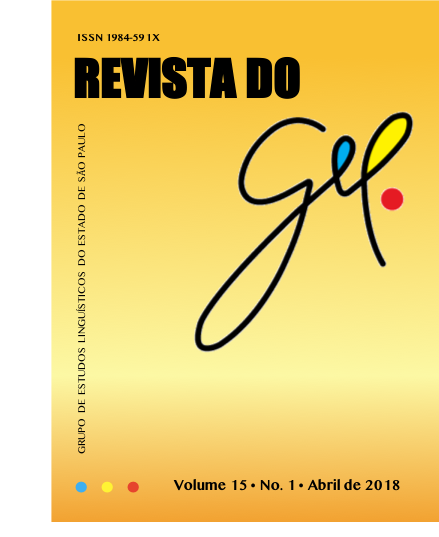Relação entre a matriz linguística multimodal e a atenção conjunta de criança com síndrome de Down
DOI:
https://doi.org/10.21165/gel.v15i1.1835Parole chiave:
Desenvolvimento da linguagem, Síndrome de Down, Matriz linguística multimodal, Atenção conjuntaAbstract
A síndrome de Down (SD) é uma condição genética resultante da presença extra de um cromossomo 21, que pode gerar diversos problemas de saúde, como cardiopatias, e atraso no desenvolvimento da linguagem. As crianças com a síndrome apresentam mais déficits na linguagem expressiva, enquanto a sua compreensão e comunicação gestual é mais desenvolvida. Nesse sentido, este estudo objetivou analisar a relação entre as produções linguísticas e a atenção conjunta de uma criança com síndrome de Down em processo de intervenção fonoaudiológica. Trabalhou-se com a hipótese de que as produções linguísticas e a atenção conjunta se desenvolvem mutuamente. Para isso, foram realizadas filmagens semanais, durante um ano de atendimento fonoaudiológico de um menino com SD que possuía 16 meses no início da coleta e apresentava uma cardiopatia congênita. Posteriormente, os vídeos foram analisados no programa ELAN, a fim de descrever quantitativamente as produções vocais e gestuais, e a atenção conjunta da criança. Constatou-se que a intervenção fonoaudiológica favoreceu o desenvolvimento da linguagem da criança com síndrome de Down, principalmente das produções vocais (p=0,04), e que houve um crescimento conjunto entre as produções gestuais (p=0,001) e a atenção conjunta da criança. Desse modo, com o atraso no desenvolvimento da linguagem verbal, as produções gestuais da criança com SD favoreceram sua inserção em cenas de atenção conjunta.Downloads
Downloads
Pubblicato
2018-04-26
Come citare
Lima, I. L. B., Delgado, I. C., & Cavalcante, M. C. B. (2018). Relação entre a matriz linguística multimodal e a atenção conjunta de criança com síndrome de Down. Revista Do GEL, 15(1), 85–99. https://doi.org/10.21165/gel.v15i1.1835
Fascicolo
Sezione
Artigos
Licenza
Esta revista oferece acesso livre imediato ao seu conteúdo, seguindo o princípio de que disponibilizar gratuitamente o conhecimento científico ao público proporciona maior democratização mundial do conhecimento.
A REVISTA DO GEL não cobra taxa de submissão ou de editoração de artigos (articles processing charges – APC).
Os critérios gerais de direitos autorais da REVISTA DO GEL estão dispostos no termo de direitos autorais que cada autor aceita ao submeter seu trabalho no periódico. Como regra geral o periódico utiliza as regras CC BY-NC da Creative Commons (regra disponível em: https://creativecommons.org/licenses/by-nc/4.0/legalcode)



